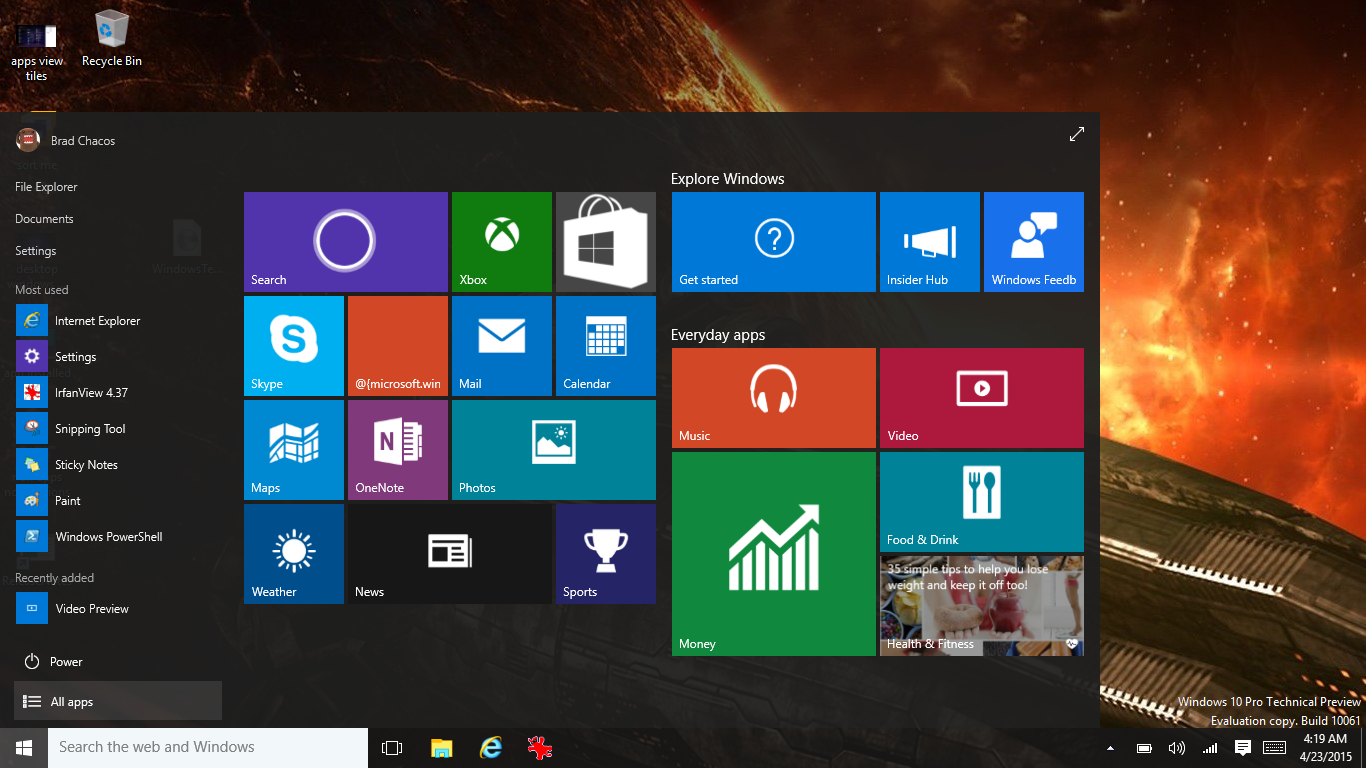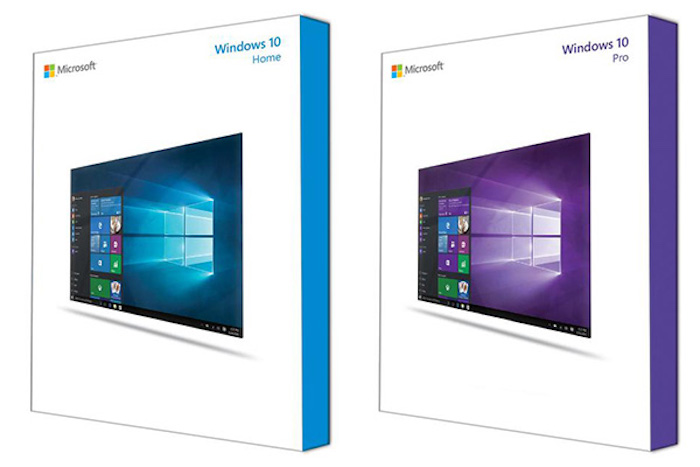Beda Windows 10 Pro Dan Pro N
Windows 10 Enterprise memiliki seluruh fitur yang ada di Windows 10 Pro dan juga beberapa fitur tambahan lainnya seperti operating system deployment and comprehensive device and app management. Windows 10 Enterprise sangat cocok untuk kalangan perusahaan menengah atau besar. Biasanya Windows 10 Enterprise memiliki perjanjian lisensi Volume License. Keempat Windows ini sama-sama bagus dan dari segi fitur memang terdapat perbedaan dimana versi Windows 10 Enterprise dan Windows 10 Education memiliki fitur lebih lengkap dari Windows 10 Pro dan Windows 10 Home. Perbedaan Windows 10 Home dan Pro pertama adalah dari fitur intinya. Sebelumnya kami sudah menyebutkan kalau kedua edisi Windows 10 tersebut memiliki fitur inti yang sama. Fitur-fitur inti tersebut adalah Start Menu, User Experience, User Interface, Cortana, Virtual Desktop, Windows Hello, dan beberapa yang lainnya.
Beda Nya Windows 10 Pro Dan Pro N
Windows 10 HomeWindows 10 Home mostly comes pre-installed in the laptops you buy. It contains all the major features included in Windows 10 like Cortana, Microsoft Edge, Continuum, universal apps etc. The things missing are mostly related to networking. The home edition can’t be joined in a domain and it does not include group policy editor. If you are going to use Windows 10 on your home computer, Windows 10 Home is suitable for you. Other features not included in Windows 10 Home are Bitlocker, Enterprise Mode IE, Remote Desktop and Client Hyper-V. Windows 10 ProWindows 10 Professional edition is mostly used in Office environments where joining a Windows Server domain is required.
Windows 10 Pro comes with all the features of Windows 10 Home and features like Group Policy Management, Bitlocker encryption, Remote Desktop, Hyper-V, Azure Active Directory join ability, enterprise data protection, Windows Update for business etc. Windows 10 MobileWindows 10 Mobile is designed for smartphones and tablets and includes basic consumer features including Continuum capability. What does VL stand for?You will see Windows 10 Enterprise VL editions.
VL stands for Volume License. This means that a single license key can be used to activate multiple installations of Windows 10. This is usually used by large enterprises. N and KN editionsWindows 10 N editions are specifically designed for Europe and Switzerland to comply with the European law. The N stands for Not with Media Player and does not come with Windows Media Player pre-installed.KN is specially designed for Korean market and does not include Windows Media Player (WMP) and an instant messenger.Hopefully this gives a brief comparison of all the Windows 10 editions. Wikipedia gives a very good and for full detailed comparison, you can read the. Must Read Articles:.

Beda Windows 10 Pro Dan Pro Not Working

ReFS (Resilient File System)RELATED:“provides cloud-grade resiliency for fault-tolerant storage spaces and manages very large volumes with ease.”This feature isn’t technically exclusive to Windows 10 Pro for Workstations. You can use it on any edition of Windows 10 along with. When used along with Storage Spaces, ReFS can detect when data becomes corrupt on a mirrored drive and quickly repair it with data from another drive.However, ReFS can only be used on Storage Spaces on normal editions of Windows 10. Windows Server 2016 systems can format drives as ReFS without using Storage Spaces, and this offers some performance advantages in certain situations—for example, when using various virtual machine features in.
But, to really benefit from ReFS, you’ll need a PC with multiple storage drives.At the moment, Windows 10 can’t actually boot from ReFS, so there’s no way to format your system drive as ReFS. This means ReFS can’t fully replace NTFS. It’s unclear whether Microsoft is fixing this limitation for Windows 10 Pro for Workstations, or simply allowing users to format any drive with the ReFS file system.Persistent MemoryWindows 10 Pro for Workstations supports NVDIMM-N hardware. NVDIMM-N is a non-volatile type of memory. This memory is as fast to access and write to as normal RAM, but the data stored in it won’t be erased when your computer shoots down—that’s what the non-volatile part means.This allows demanding applications to access important data as quickly as possible.
The data doesn’t need to be stored on a slower disk and moved back and forth between memory and storage.The reason we don’t all use NVDIMM-N memory today is because it’s much more expensive than normal RAM. It’s very high-end hardware right now, and if you don’t have the expensive hardware, you can’t take advantage of this feature anyway. Faster File SharingThis edition of Windows 10 includes SMB Direct, a feature also available on Windows Server. SMB Direct requires network adapters that support Remote Direct Memory Access (RDMA).As Microsoft puts it, “Network adapters that have RDMA can function at full speed with very low latency, while using very little CPU.” This aids applications that access large amounts of data on remote SMB shares over the network. Such applications benefit from faster transfer of large amounts of data, lower latency when accessing data, and low CPU utilization even when transferring a large amount of data very quickly.Once again, you need high-end hardware that isn’t available on a typical consumer desktop PC to do this.
If you don’t have network adapters that support RDMA, this feature won’t help you.You can check whether your network adapters are RDMA-capable through PowerShell. Right-click the Start button on Windows 10 and select “PowerShell (Admin)” to open PowerShell as Administrator. Type “ Get-SmbServerNetworkInterface” at the prompt and press Enter. Look under the “RDMA Capable” column to see whether they support RDMA. On a typical desktop PC, they almost certainly won’t.Expanded Hardware SupportMicrosoft is allowing Windows 10 Pro for Workstations to run on devices with “high performance configurations”, including server-grade Intel Xeon and AMD Opteron processors that would normally require Windows Server.Windows 10 Pro currently only supports up to two physical CPUs and 2 TB of RAM per system, but Windows 10 Pro for Workstations will support up to four CPUs and 6 TB of RAM.Once again, this feature will only aid people building expensive, high-end professional PCs. How Do I Get It?RELATED:This new edition of Windows 10 will be available when the is released.Microsoft hasn’t actually mentioned a price tag for this product.
It’s intended for high-end workstation PCs. Microsoft isn’t going to sell it alongside other editions of Windows 10 in retail stores, and they have no reason to. All the features only benefit people who require support for expensive, high-end hardware. High-end workstation PCs will ship with Windows 10 Pro for Workstations installed, and it will likely be available to businesses and other organizations in volume license agreements.While Microsoft is adding another edition of Windows 10, most people won’t need to even know it exists. But it’s another way for Microsoft to segment the market for Windows licenses, allowing them to charge more for a version of Windows 10 that will be required on very expensive workstation PCs.